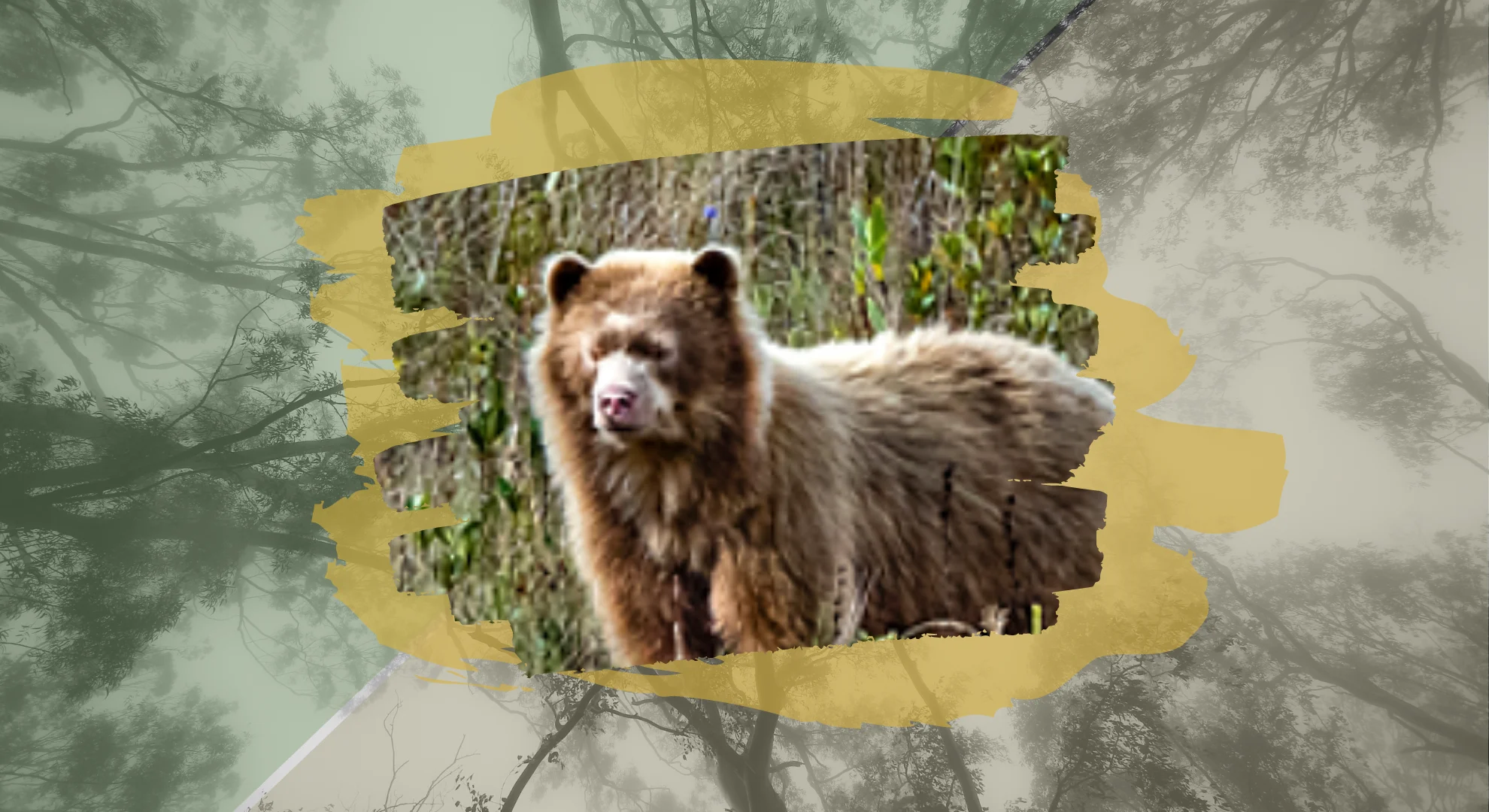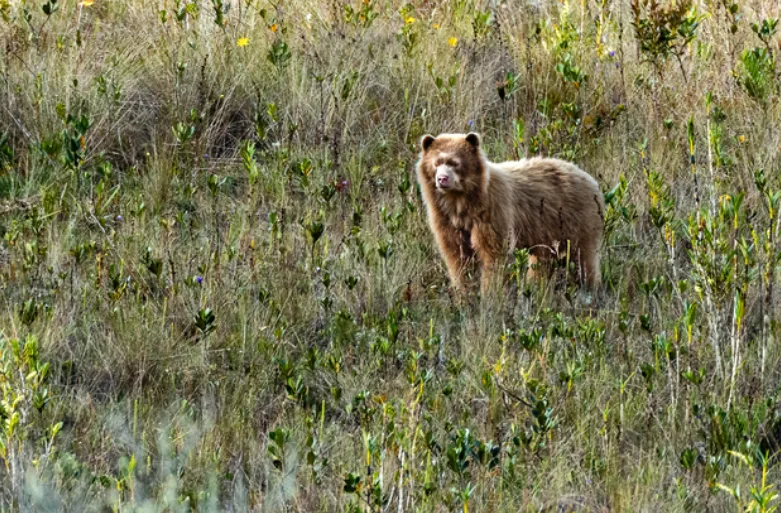
Scientists observe 'real-life Paddington Bear' in the wild
The lone bear sighting is a first, experts say.
A new study from Peru has a few bits of good news: For starters, there may be more spectacled bears in the country than previously thought. Second, during their scouting researchers observed the first "golden" spectacled bear - which, according to a statement from the study's authors, has "an uncanny resemblance to the popular children’s book character 'Paddington Bear.'"
What do you think? Here's Paddington:
And here's the bear:

Credit: Michael Tweddle
Researchers from Gothenburg University, Martin Luther University Halle-Wittenberg, and Stony Brook University examined the spectacled bear population in Northern Peru, establishing population density and range.
The team had originally set out to study the yellow-tailed woolly monkey but changed course after hearing from locals that bears were often spotted in the area.
The spectacled bear is elusive and not much is known about its ecology, making it difficult to strategize how to protect the endangered species, lead author Wilhelm Osterman of Gothenburg said in a statement.
Most of them are completely black - but a lone golden bear was observed, representing a first for scientists. It's not clear how it developed the colour deviation.

Based on the findings, the team estimates there are more than ten bears per 100 km, about double what was previously thought. But more research is needed to determine if the bears are concentrated in a local hot spot, or if the population numbers will hold up over larger areas.
Understanding what conditions the bears best respond to will help with conservation efforts, researchers say.
The spectacled bear is considered to be an "umbrella species," because it indirectly protects several other species in its local environment.
It is listed as "vulnerable" on the IUCN red list, largely due to deforestation and human activity.
Graphical elements created by Cheryl Santa Maria.










